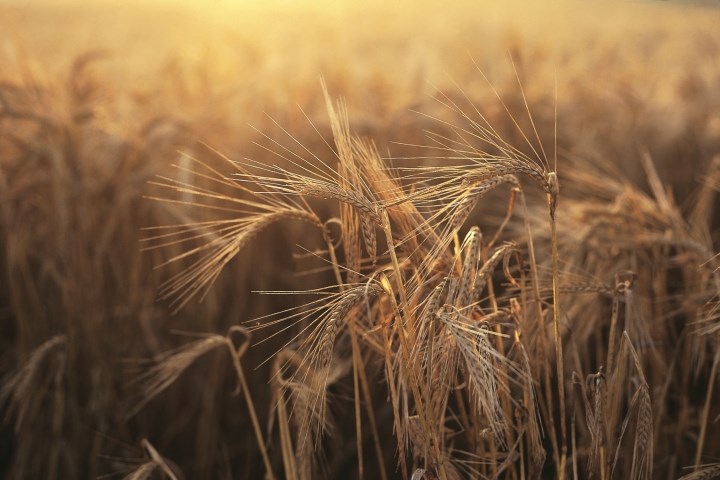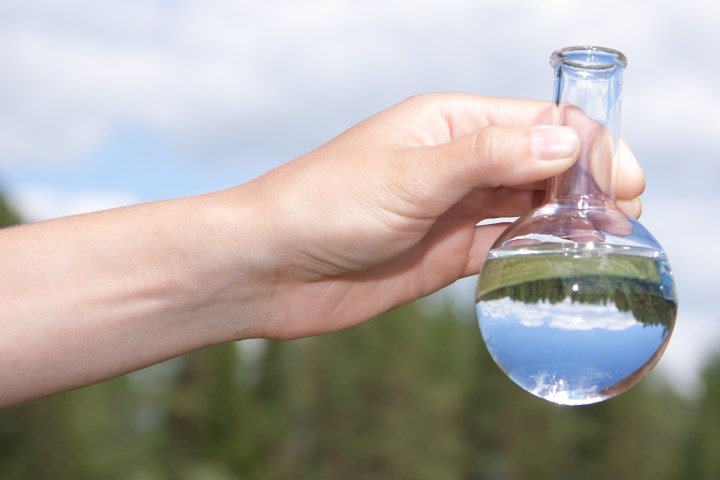Man-Technology-Environment research centre (MTM)
MTM focus on applied research on chemicals in the environment and sustainable development together with regional, national and international stakeholders in business, government, universities and research institutes. We work in the following five areas.
About
Environment information
Contact
Research domains
- Science
Areas of research
- Analytical Biogeochemistry
- Biogeosphere dynamics
- Sustainable Development
- Environment and Health
- Environmental and Sustainability Education
- Environmental toxicology
- Research in science education
- Ecosytem ecology
- Applied Environmental Science and Technology
MTM is one of Örebro University's strong research environments. We focus on applied research on chemicals in the environment and sustainable development together with regional, national and international stakeholders in business, government, universities and research institutes. The main research focus is aimed at persistent organic pollutants, metals and emerging pollutants, including perfluorinated chemicals, endocrine disruptors and plastic pollution. Using state of the art technology we analyse occurrence, speciation, fate, behavior and toxicity and health effects of these pollutants in all parts of the biosphere. In several projects we try to find links between common diseases like cancer, heart disease and obesity and chemical exposure. The ambition is to find the hazardous chemicals at an early stage, thereby enabling actions for their removal from the environment, from food, feed and from consumer products. MTM also works with technical solutions to environmental problems. The research focusing on waste develops methods to extract valuable metals. The research directed at polluted areas contributes to better risk assessment and soil remediation methods. The research projects are conducted in collaboration with international authorities like UNEP, private business and NGOs.
Research projects
Active projects
- BALANCE - Treatment of low-contaminated soil with biochar produced from organic waste for sustainable resource use and circular economy
- Biochar application for pollutant stabilization and ecological restoration of contaminated land in Sweden
- Cell Painting: a novel tool in toxicology (CPTox)
- CoLiBRI - Cobalt and Lithium speciation, toxicity, and Bacterial community Regulations at the sediment-water-Interface
- Deciphering the co-effects of response to climate changes and perfluoroalkyl substances on the zebrafish
- Development of a photocatalysis method for oxidative conversion of unknown PFAS into measurable species for assessment of total PFAS in food and environmental samples including drinking water
- EcoWebWater
- Ectomykorrhizal mycelium - its production and turnover and importance for the soil carbon storage
- Effect-based strategy for identification and assessment of potential health effects of hazardous organic chemicals in indoor environments
- Element fluxes in small boreal catchments
- Ensuring Sustainable Substitution: Learning from the corporate phase-out of PFAS in outdoor clothing
- Exponering av föregångarämnen till PFAS
- Exponering och halterna av bromerade dioxiner i human prover av normal befolkning och olika yrkes grupper
- Fish & Cocktails
- Heterotrophic leaching of solid waste
- Holistic insights into the sources, distribution, exposure and temporal trends of chlorinated paraffins in the indoor environment
- Identification of ligands in fungal exudates and their function as metal ligands
- Identification of unknown pollutants
- Identifiera: Identification of toxicity driving polycyclic aromatic compounds (PAC s) for improving environmental risk assessment of contaminated sites
- ImprUV+ - An analytical framework to explore the effects of UV during plant growth on human health
- Investigation of endocrine-disrupting chemicals as contributors to progression of metabolic dysfunction-associated steatotic liver disease
- Kolisotopfraktionering under skogsväxters och markorganismers respiration
- Kvarntorp waste deposit
- LITMUS
- Metabolomics signatures in medical and environmental pattern studies
- Metal analysis in solution with micro plasma atomic emission spectroscopy
- Mine waste reclamation
- Mixture-Risk
- NanoSafety2
- NANOSIGN
- Novel analytical and computational tools for the assessment of exposure to environmental chemicals
- Occurrence, distribution and toxicity of emerging perfluoroalkyl substances (PFAS) alternatives
- PAC-Risk
- PFAS-Risk
- PLASTIC-Risk
- POPgut - The impact of persistent organic pollutants exposure on gut health
- Qualitative evaluation of metal polluted soil
- Reconciling safe and circular material flows - a case study of PFAS in the lifecycle of food packaging
- Reducing the discharge of microplastics into source waters - source tracking and identifying targeted mitigation measures
- REHAZE- Reduced inflows of hazardous substances from landfills into the Baltic Sea
- RESPONSE - Towards a risk-based assessment of microplastic pollution in marine ecosystems
- Rita för att lära och lära sig att rita i lågstadiets NO-undervisning
- Role of environmental exposure in the initiation and progression of non-alcoholic fatty liver disease and insulin resistance
- Screening of microplastics and streamlined risk assessment of hazardous substances in sludge using effect driven analysis for a safe recycling on arable lands
- SEASON - Seasonal variation of the fate, availability, and toxicity of priority pollutants at the sediment-water-interface
- Simplified strategies for comprehensive characterization of perfluoroalkyl and polyfluoroalkyl substances (PFAS) in combination with cost-effective techniques for remediation of contaminated water
- Study of the effects of perfluorooctanesulfonic compounds (PFCs) on fatty acid metabolism during avian development
- The Blue Muffin Study - Impact of gut physiology and function on the formation of bioactive oligomers upon dietary fibre consumption
- The pedagogical potential of wonder for supporting students? engagement and learning in science
- The status of ecosystem functions of polluted lands assessed in situ using plant, soil and microbial indicators
- Trace elements in ashes
- Transgenerational Effects of Pollutants
- Treatment of alkaline drainage
- Unpuzzle - Unravelling molecular motifs from dietary fibers responsible for interaction with recognition receptors in human cells
Completed projects
- A pilot study on analytical method development and measurement of fluorinated active ingredient of Scotchgard and its levels in sludge and landfill leachate from Sweden
- A pilot study on human exposure to novel poly- and perfluoroalkyl substance (PFAS) and its alternatives and total extractable organofluorine (TOF) in Sweden
- A pilot study on unidentified poly- and perfluoroalkyl substances (PFASs) in sewage in Sweden
- A temporal study on unidentified poly- and perfluoroalkyl substances (PFASs) in sewage sludge in Sweden
- Adsorption mechanisms of innovative by-product based sorbents
- Analyses of PFAS precursors and TOF in serum from individuals with a high PFAS-exposure living in Ronneby
- APPLICERA: Applicable site-specific environmental risk assessment of contaminated soils
- Are humans and the environment exposed to increasing amounts of unknown highly fluorinated substances?
- Avian developmental toxicity of perfluorochemicals: species sensitivity differences and mechanisms of action
- Baltic Sea Expedition 2014
- Bioanalytical screening of POPs in otters
- Bioanalytical studies of soils and sediments
- Biokol - Från organiskt avfall till resurs för nyttiggörande av jordavfall
- Biomonitoring PFAS in Sweden
- Blood-based metabolomics to predict severity and patient outcomes in traumatic brain injury (meTBI)
- Chemical and toxicological characterisation of PAHs and related compounds in road dust
- CleanSea
- Effects of perfluoroalkyl and polyfluoroalkyl substances on metabolic pathways studied in an avian embryo model
- Environmental and health effects of fire fighting foams
- EPHEMARE - Ecotoxicological effects of microplastics in marine ecosystems
- EPoS - Elucidating Pathways of Steatohepatitis
- Evaluation of total oxidizable precursor (TOP) assay on biota samples
- EvoVis: Challenging Threshold Concepts in Life Science
- Exponering och upptag av kobolt - effekter på luftvägar och hud samt påverkan på inflammatoriska markörer vid hårdmetallframställning
- Förskolans praktik i mötet med naturvetenskap
- Global Monitoring Plan on Persistent Organic Pollutants
- Health Consequences of Environmental Exposures in Early Life
- Human exposome study
- ImprUV - Increasing sensory quality and content of health-promoting components in vegetables and herbs
- Indoor environment and chemical exposure in low-energy buildings
- Infant's exposure for environmental pollutants
- Kontinuitet, progression och förundran i grundskolans naturvetenskapsundervisning
- Metabolic and Proteomic markers for Type 1 Diabetes
- Miljöneutrala brandsläckningsmetodiker
- Mother-Infant Interactions in Relation to Potential Biomarkers of Beta-Cell Autoimmunity and Type 1 Diabetes
- NanoSafety1
- Occurrence of microplastics in Sweden's great lakes
- Plastic pollution - chemical risks for marine ecosystems
- Recycling of phosphorous and valuable metals from sewage water and sludge
- Samverkan genom autentiska frågor inom naturvetenskap
- Screening of PFAS and total organic fluorine (TOF) in Nordic Countries
- Screening of total organofluorine substances (TOF) and emerging PFASs in the Swedish environment
- SOILEFFECT: Development of bioreporter-based survey and health risk assessment of toxic chemicals in contaminated areas
- SOILTOX: processoptimering och innovation av marksaneringsmetoder med hjälp av bioanalytiska toxicitetstester
- Studying the association between persistent organic pollutants (POPs) and plastic litter in ocean gyres
- Sustainable food production in Sweden - the potential of agroforestrysystems
- Transfer of per- and polyfluoroalkyl substances from the aquatic environment to the terrestrial ecosystem: mechanisms and ecological effects
- Ultra-short-chain perfluoroalkyl substances (PFASs) in the Swedish environment - an unknown environmental threat?
- UN global monitoring of PFAS in human milk






